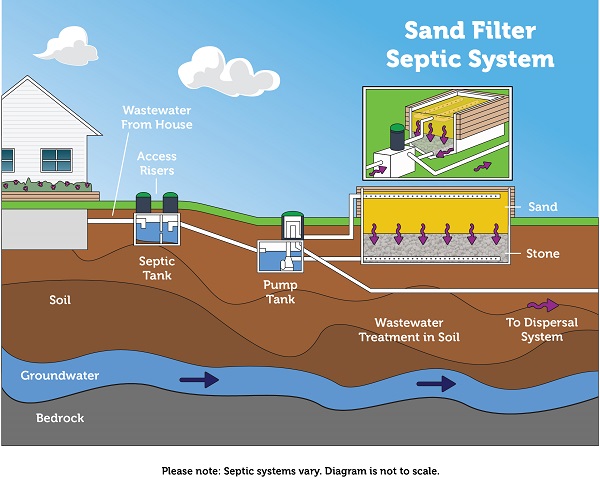The Art of Sewage-disposal Tank Solutions: Professional Tips and Strategies for Optimum Efficiency and Sustainability
Are you struggling to keep your sewage-disposal tank running efficiently? Discover the tricks to optimum efficiency and sustainability in this specialist overview. Find out why normal upkeep is important, comprehend the function of germs, and prevent common mistakes that can result in costly repair work. With professional suggestions on appropriate pumping and sustainable practices, you'll be geared up to keep your septic tank functioning flawlessly for the long-term. Prepare yourself to understand the art of sewage-disposal tank solutions.
Why Normal Maintenance Is Vital
Regular upkeep is an essential demand for ensuring the optimal efficiency and sustainability of your sewage-disposal tank system. By routinely keeping your septic storage tank, you can prevent prospective issues prior to they develop into expensive and bothersome issues (septic tank pumping rome ga). When you forget maintenance, your septic container can become overloaded with solid waste and sludge, causing clogs, backups, and also system failure
You should have your tank pumped on a regular basis, commonly every 3 to five years, depending on the size of your home and the tank's capacity. In addition, it is crucial to evaluate the storage tank and its parts for any indications of damage or wear.
Recognizing the Duty of Germs
To guarantee optimal performance and sustainability of your septic system system, it is essential to understand the essential role that microorganisms play in its operating. Germs are the unrecognized heroes of your septic tank, as they are accountable for damaging down the strong waste and turning it into fluid type. This process is known as food digestion, and it is crucial for the appropriate functioning of your sewage-disposal tank.
Inside your septic storage tank, there are two kinds of germs at the workplace: cardio and anaerobic germs. Aerobic microorganisms need oxygen to flourish and survive, and they are liable for breaking down the raw material in the visibility of oxygen. On the other hand, anaerobic bacteria do not need oxygen and are accountable for damaging down the raw material in the absence of oxygen.
Both kinds of bacteria collaborate to make sure the efficient disintegration of waste in your septic system. They break down the solid waste right into sludge, which then settles at the end of the storage tank. The remaining fluid waste, known as effluent, is after that released into the drainpipe area for further treatment and filtration.
Without these microorganisms, your sewage-disposal tank would quickly end up being overwhelmed with strong waste, leading to clogs, back-ups, and prospective system failing. As a result, it is essential to preserve the appropriate balance of germs in your sewage-disposal tank by preventing extreme use antibacterial products and occasionally including bacterial additives to advertise their development.
Preventing Usual Sewage-disposal Tank Mistakes
Maintaining the correct equilibrium of bacteria in your septic tank is critical to avoid typical errors that can lead to system failure. These products can clog the system and disrupt the all-natural failure of waste by the microorganisms.
One more mistake to avoid is making use of extreme chemicals or cleaners that can kill the beneficial bacteria in your sewage-disposal tank. These germs play an important role in damaging down solid waste, so it is very important to make use of septic-safe cleansing items and prevent pouring chemicals down the drainpipe.
Ignoring regular upkeep is one more common error that can result in septic tank troubles. It is essential to have your tank pumped regularly to eliminate built up sludge and stop it from overflowing or creating damage to the drainpipe field. In addition, having your storage tank inspected on a routine basis can help determine any kind of prospective concerns before they come to be major troubles.
Lastly, too much water usage can overload your septic tank and create it to stop working. Be conscious of your water usage and stay clear of running multiple devices at the same time or taking exceedingly lengthy showers. By staying clear of these usual mistakes and taking correct care of your sewage-disposal tank, you can guarantee its optimal performance and prevent pricey repair work in the future.
Tips for Correct Sewage-disposal Tank Pumping
- To make certain optimum performance and longevity of your sewage-disposal tank, adhere to these 3 necessary ideas for appropriate pumping.
Firstly, it is crucial to set up routine septic system pumping. Experts advise having your container pumped every three to five years, relying on the size of your household and the use of water (septic tank pumping rome ga). Routine pumping eliminates accumulated sludge and stops it from blocking the drain area, making sure the efficient performance of your septic tank
Secondly, it is necessary to employ a professional septic system pumping service. A professional will certainly have the required tools and experience to pump your storage tank properly and securely. They will additionally examine the container for any type of indicators of damage or leakages, permitting very early detection and avoidance of index potential issues.
Prevent purging non-biodegradable things, such as wipes or womanly hygiene products, down the toilet. In addition, be conscious of too much water usage and take into consideration installing low-flow fixtures to minimize strain on your septic system.
Sustainable Practices for Long-Term Performance
For long-term performance, it is essential to adopt sustainable practices go now that will certainly maximize the performance of your septic tank. By carrying out these practices, you can make sure the longevity and effectiveness of your septic tank.
To start with, regular upkeep is critical. Schedule regular evaluations and pumpings to stop any accumulation of sludge and scum. This will aid preserve the correct balance of germs within the tank and avoid blocking or overflow issues.
Secondly, be mindful of what you purge away. Prevent dealing with non-biodegradable products, such as baby diapers, wipes, or feminine health products, as they can create clogs and damage to the system. In addition, limit making use of extreme chemicals, such as bleach or anti-bacterial soaps, as they can disrupt the bacterial balance within the storage tank.

Additionally, secure the drain field area. Prevent auto parking cars or putting hefty objects over the drainpipe field, as this can small the soil and limit its ability to take in wastewater properly. Growing turf or shallow-rooted plants can help absorb excess dampness and give all-natural filtration.
Final Thought

You need to have your container pumped routinely, usually every three to five years, depending on the size of your home and the storage tank's capability.To guarantee ideal performance and sustainability of your septic tank system, it is important to understand the essential role that bacteria play in its functioning.Inside your septic container, there are 2 kinds of microorganisms at job: cardiovascular and anaerobic germs.Both types of bacteria function with each other to make certain the reliable decomposition of waste in your septic storage tank.Maintaining the correct equilibrium of germs in your septic tank is important to avoid common blunders that can lead to system failing.